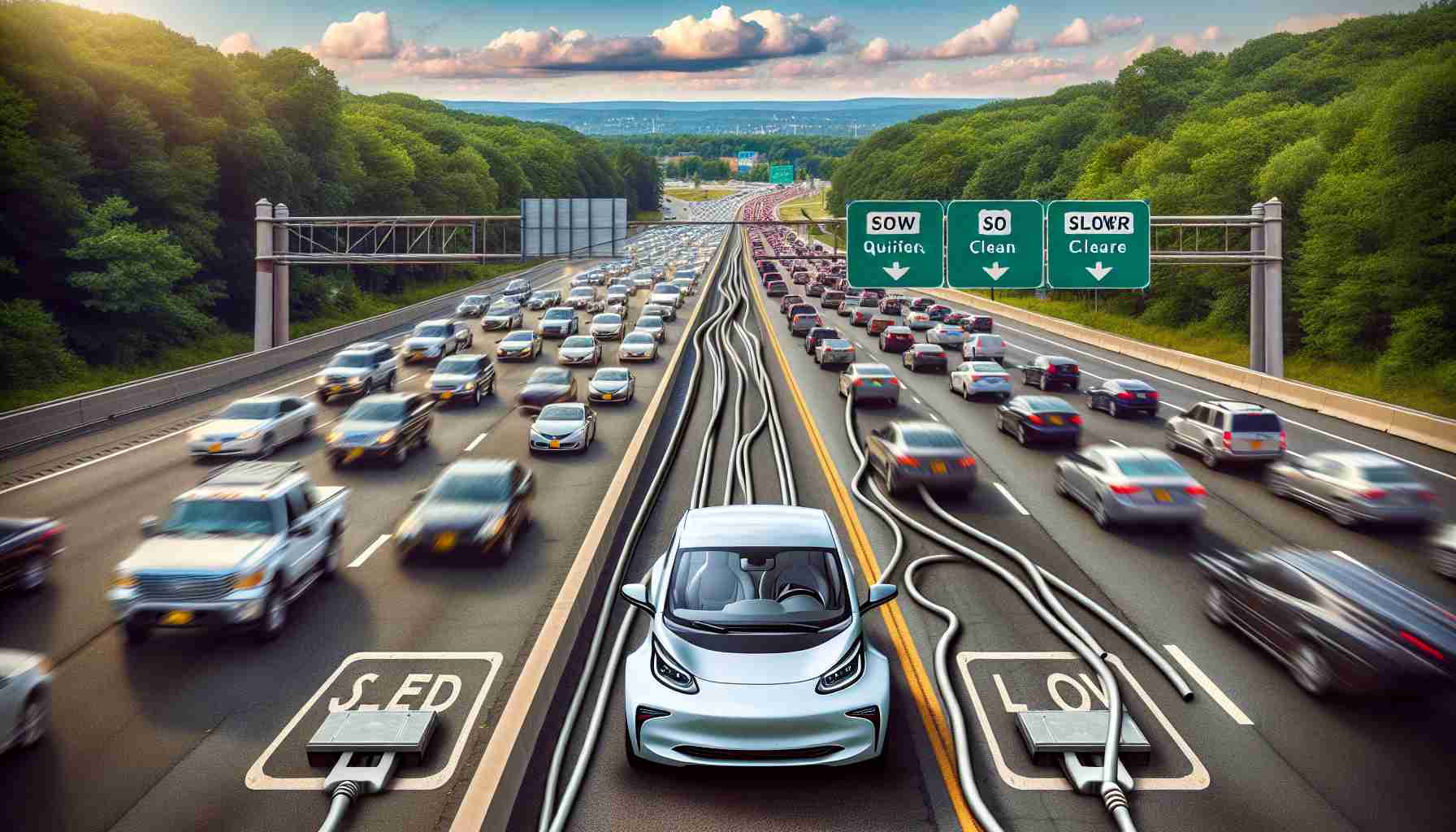- Connecticut’s electric vehicle sales currently stand at only 11%, significantly lagging behind states like California.
- Governor Ned Lamont’s decision to halt the phase-out of gas-powered cars raises concerns about the state’s commitment to EV goals.
- Charging infrastructure scarcity and range anxiety are prominent obstacles for potential EV users.
- Experts forecast a potential increase in the EV market to 30% by 2030 with appropriate policies and infrastructure enhancements.
- Innovations in battery technology and expanding charging networks are crucial for increasing EV adoption.
- Connecticut’s reversion to federal emissions standards limits its ability to implement stricter regulations, putting it at a competitive disadvantage.
- The choice between ambitious EV goals and practical challenges will shape Connecticut’s electric vehicle future.
Connecticut stands at a crucial crossroads in its electric vehicle (EV) journey, teetering between ambitious goals and practical challenges. Governor Ned Lamont’s recent retreat from plans to phase out gas-powered cars has left many questioning the state’s commitment to a greener future. With only 11% of new vehicle sales being electric—well below other proactive states like California—Connecticut is falling behind in the race toward sustainable transportation.
The political landscape is fraught with division. Some Democrats express concern over the feasibility of transitioning to EVs, particularly citing the scarcity of charging infrastructure and rising fears of “range anxiety.” Meanwhile, the fossil fuel industry seizes this moment of uncertainty to push for consumer choice, arguing that rapid transitions could impact traditional jobs and the economy.
So, what does the future hold? Experts predict that with the right policies and infrastructure in place, the EV market could soar to 30% by 2030. Innovations in battery technology and expanded charging networks are vital, paving the way for broader adoption. However, reversion to federal emissions standards hampers Connecticut’s ability to enact stricter regulations, leaving it vulnerable to falling behind its greener counterparts.
The key takeaway? Connecticut must decisively choose between ambition and practicality. As the state grapples with these issues, the direction it takes now will determine the shape of its electric journey and its commitment to a sustainable future. Will it accelerate toward the finish line, or risk getting stuck in traffic?
Is Connecticut Ready to Drive into the Electric Future? Here’s What You Need to Know!
Connecticut’s Electric Vehicle Landscape: Current State and Future Prospects
Connecticut is currently facing significant challenges and opportunities in its transition to electric vehicles (EVs). With the state’s EV sales at a mere 11%, it lags behind leaders like California. Governor Ned Lamont’s recent decision to halt the phase-out of gas-powered cars raises questions regarding the state’s ambition for a sustainable future.
# Current Trends and Insights
– Charging Infrastructure: The limited availability of EV charging stations remains a critical barrier to widespread adoption, contributing to “range anxiety” among potential consumers.
– Political Landscape: The divide among Democrats regarding the feasibility of a complete EV transition reflects broader concerns, including job security in traditional fuel industries.
– Battery Innovations: Advancements in battery technology play a key role in decreasing costs and improving the performance of electric vehicles, crucial for incentivizing consumer adoption.
# Important Related Topics
– Market Forecasts: Experts estimate that with adequate policies and infrastructure, the electric vehicle market share could increase to 30% by 2030.
– Sustainability Aspects: Transitioning to EVs is considered a significant step towards reducing greenhouse gas emissions, though current policies are hampering progress.
– Public Sentiment: Consumer interest in EVs is on the rise; however, perceived risks related to reliability and convenience significantly affect purchase decisions.
# Limitations and Challenges
– Federal Regulations: Connecticut’s ability to implement more aggressive emissions regulations is limited by federal standards, which can inhibit local progress towards a greener economy.
– Economic Considerations: The fossil fuel lobby’s advocacy for consumer choice raises concerns about traditional job losses, creating friction in the political narrative surrounding EV adoption.
# Key Questions:
1. What specific policies could help increase electric vehicle adoption in Connecticut?
To enhance EV adoption, Connecticut could implement incentives like tax credits for EV buyers, grants for charging station installations, and collaborations with private sectors to create a comprehensive charging network. Compulsory EV targets for automakers can also accelerate the transition.
2. How can the state address the fears of range anxiety among potential EV buyers?
Addressing range anxiety requires the establishment of a reliable and extensive charging infrastructure, including fast-charging stations along highways and in urban areas. Public awareness campaigns about charging options and benefits could also be effective in easing these fears.
3. What role does community engagement play in accelerating EV adoption?
Community engagement is crucial; educating the public about the benefits of EVs, addressing their concerns through workshops, and fostering local EV clubs can create a supportive environment for adoption. Collaboration with local governments and businesses can also lead to successful initiatives.
# Suggested Related Links
– Connecticut Official State Government
– Connecticut Department of Energy and Environmental Protection
Connecticut’s journey towards a sustainable transportation future hinges on decisive action, robust policies, and public engagement. The state must navigate its crossroads judiciously to harness the potential of electric vehicles and secure a greener future.



















